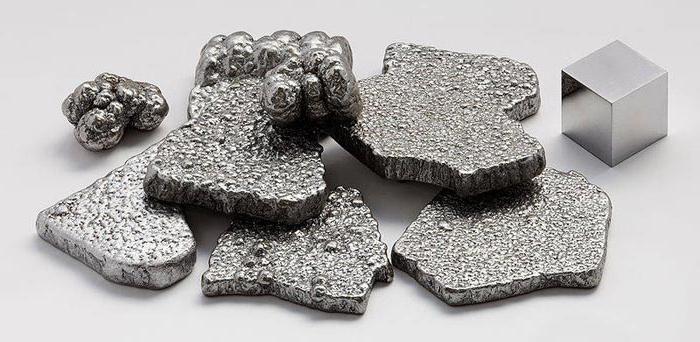List of heavy metals: types and features
Of all 104 known to mankind for todaychemical elements 82 are metals. They occupy a prominent place in the lives of people in the industrial, biological and environmental spheres. Modern science divides metals into heavy, light and noble metals. In this article we will consider the list of heavy metals and their features.
Determination of heavy metals
Initially, heavy metals were acceptedcall those of their representatives who have an atomic mass above 50. However, the use of the term in question today occurs more often not from the chemical point of view, but depending on their impact on environmental pollution. Thus, the list of heavy metals includes those metals and metalloids (semimetals) that pollute elements of the human biosphere (soil, water). Let's look at them.
How many items does the list of heavy metals include?
For today there is no common opinionrelative to the number of elements in the named list, since there are no general criteria relating metals to heavy metals. Nevertheless, the list of heavy metals can be formed depending on various properties of metals and their attributes. They include:
- Atomic weight. Proceeding from this criterion, the named ones belong to more than 40 elements with an atomic mass exceeding 50 amu (g / mol).
- Density. Proceeding from this criterion, those metals are considered to be heavy, in which the density is equal to or exceeds the density of iron.
- Biological toxicity combines heavy metals, negatively affecting the vital activity of humans and living organisms. There are about 20 elements in their list.
Influence on the human body
Most of these substances havenegative impact on all living organisms. In view of the significant atomic mass, they are poorly transported and accumulate in human tissues, causing various diseases. So, for the human body, cadmium, mercury and lead are recognized as the most dangerous and most heavy metals.
The list of toxic elements is grouped according to the degree of danger according to the so-called Mertz rules, according to which the most toxic metals have the lowest exposure range:
- Cadmium, mercury, thallium, lead, arsenic (groupthe most dangerous metallic poisons, the excess of permissible standards of which can lead to serious psycho-physiological disorders and even to death).
- Cobalt, chromium, molybdenum, nickel, antimony, scandium, zinc.
- Barium, manganese, strontium, vanadium, tungsten
This does not mean, however, that none of the elements,grouped above, according to Mertz's rules, should not be present in the human body. On the contrary, the list of heavy metals includes these and more than 20 elements, a small concentration of which is not only not dangerous for human life, but is also necessary in metabolic processes, especially iron, copper, cobalt, molybdenum and even zinc.
Pollution of the environment by heavy metals
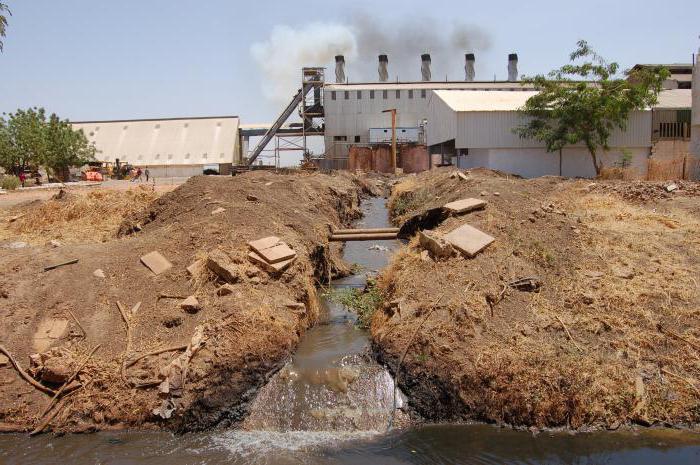
Elements of the biosphere being contaminatedHeavy metals are soil and water. Most often, the culprits of this are metallurgical enterprises that process light and heavy non-ferrous metals. The list of polluting agents is also replenished by garbage incineration plants, automobile exhausts, boilers, chemical production plants, printing companies and even power plants.
The most common toxins are: lead (automotive production), mercury (an example of distribution: broken-down thermometers and fluorescent lighting devices), cadmium (formed as a result of incineration of garbage). In addition, most factories in production use this or that element, which can be characterized as heavy. The metal of the group, the list of which was listed above, in the form of waste enters most often into reservoirs and then reaches the human chain via a trophic chain.
In addition to technogenic factors of pollution of nature with heavy metals, there are also natural ones - these are volcanic eruptions, in the lava of which there is an increased content of cadmium.
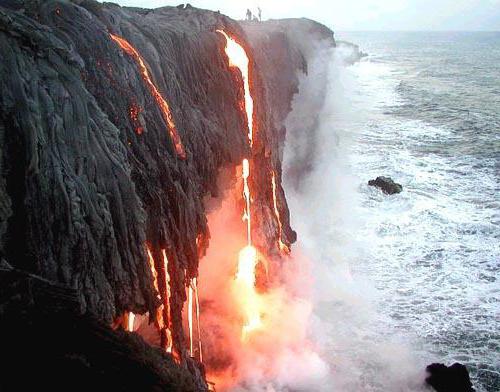
Features of the distribution in nature of the most toxic metals
Mercury in nature is most often localized in waterand the air environment. In the waters of the world's oceans, mercury comes from industrial sinks, and mercury vapor is also produced from coal combustion. Toxic compounds are accumulated in living organisms, especially in seafood.
Lead has a wide range of distribution. It accumulates in the mountains, and in the soil, and in water, and in living organisms, and even in the air, in the form of exhaust gases from automobiles. Of course, lead enters the environment and as a result of anthropological action in the form of waste from the industrial sector and non-recyclable waste (batteries and batteries).

And the source of pollution of the environment by cadmiumwaste water from industrial enterprises, as well as natural factors: weathering of copper ores, leaching of soils, as well as the results of volcanic activity.
Scope of heavy metals
Despite the toxicity, the modernthe industry creates a huge variety of useful products, processing heavy non-ferrous metals, the list of which includes alloys of copper, zinc, lead, tin, nickel, titanium, zirconium, molybdenum, etc.
Copper is a highly plastic material, of whichvarious wires, pipes, kitchen utensils, ornaments, roofing and many other things are obtained. In addition, it is widely used in engineering and shipbuilding.
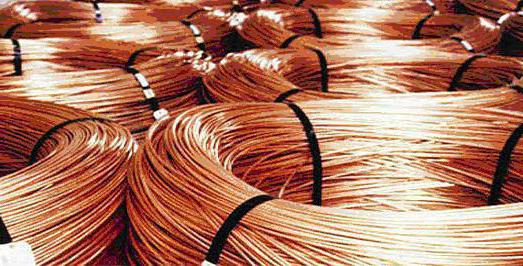
Zinc has a high anti-corrosionproperties, so the use of zinc alloys to cover metal products (so-called galvanizing) is common. Applications of zinc products: construction, mechanical engineering, printing (printing plates), rocketry, chemical industry (varnish and paint production) and even medicine (antiseptic agents, etc.).
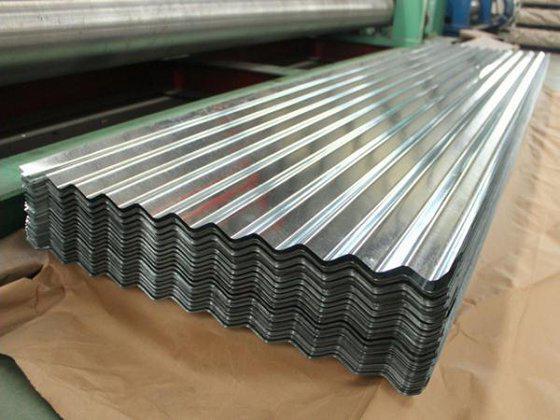
Lead is easily melted, so it is used inquality raw materials in many industries: paint and varnish, chemical, automotive (part of the battery), radio electronic, medical (making protective aprons for patients during X-rays).


